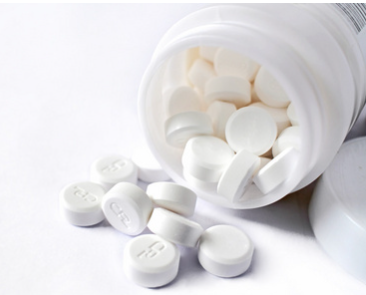01
The second largest basic component unit of natural polysaccharides in nature
N-acetylglucosamine (GlcNAc), systematically named 2-acetylamino-2-deoxyglucose, is an important multifunctional monosaccharide widely used in the fields of medicine, food, and chemical industry. GlcNAc is the fundamental unit of chitin, the second largest natural polysaccharide in nature, with reducing properties. Glucosamine (GlcN) obtained from the deacetylation of GlcNAc is the fundamental component of some important polysaccharides in human cells. N-acetylglucosamine is widely present in nature, not only in microbial communities such as fungi and bacteria, but also in large quantities in animal and plant cells. In addition, GlcNAc is an important prerequisite for the synthesis of bifidogenic factors and is also an important component of polysaccharides such as hyaluronic acid, heparin, and keratin sulfate in the body, maintaining normal physiological functions.

02
The Source and Preparation Method of GlcNAc
The vast majority of animals, plants, bacteria, yeast, filamentous fungi, and other microorganisms can synthesize GlcNAc. The crustaceans of organisms such as shrimp, crabs, and shellfish contain abundant GlcNAc, which is also an important component of the cell walls of most bacteria and fungi. There are three main methods for preparing GlcNAc: chemical method, microbial fermentation method, and enzymatic hydrolysis. At present, most GlcNAc and its derivatives such as glucosamine are obtained through chemical processes in the market. The chemical method directly produces GlcNAc by treating shrimp and crab shells (containing a large amount of chitin) with acid (alkali). The microbial fermentation method mainly involves cultivating fermentation microorganisms and fermenting glucose as a substrate to prepare GlcNAc. Enzymatic hydrolysis is a method of obtaining GlcNAc from shrimp and crab shells through the synergistic degradation of one or several enzymes. The biological preparation method is relatively more environmentally friendly and efficient, and is more easily accepted by consumers. 03
Prescription or over-the-counter drugs in European countries
The GlcN obtained from deacetylation of GlcNAc has been used as a prescription or over-the-counter drug for the treatment of arthritis in some European countries, as it can effectively treat arthritis through normal human metabolism and promote joint healing after fractures. In addition, as important precursors of glycosaminoglycans in the human body, such as hyaluronic acid, chondroitin sulfate, and keratin sulfate, GlcNAc and GlcN are also essential for repairing and maintaining human cartilage health. As the human body ages, its ability to synthesize and metabolize GlcNAc and GlcN gradually decreases. Supplementing GlcNAc and GlcN can effectively prevent further deterioration of human cartilage damage and promote timely repair of damaged cartilage while maintaining its health. Scholars have studied 68 healthy individuals using GlcNAc at a concentration of 500-1000mg/day and found that GlcNAc can improve cartilage metabolism by inhibiting the degradation of type II collagen in articular cartilage, without any adverse reactions. This proves that GlcNAc can serve as an effective supplement to prevent and assist cartilage damage and repair, and N-acetylglucosamine has been shown to have significant efficacy in the treatment of rheumatoid arthritis.

04
Potential candidate drugs for the treatment of intestinal diseases
IBD includes many intestinal diseases, such as ulcerative colitis, chronic proctitis, and Crohn's disease. GlcNAc can enhance the release of acidic mucopolysaccharides from fibroblasts and restore the formation of protective structures in the gastrointestinal mucosa. In addition, GlcNAc increases the elasticity of the surrounding tissues of blood vessels, leading to an increase in arterial capillary blood flow. GlcNAc is also a cell protective agent that can restore the integrity of human mucosa and maintain normal function. Clinical trials have shown that GlcNAc has a certain effect on the treatment of IBD, and patients with Crohn's disease have significantly improved symptoms after oral administration of GlcNAc. Therefore, GlcNAc is expected to become an inexpensive and non-toxic drug for the treatment of chronic IBD. 05
Treating cancer and malignant tumors
Research has shown that GlcNAc can enhance the human immune system. Studies have found that high expression of O-GlcNAc transferase (OGT) in mouse large B cell (DLBCL) lymphoma can inhibit the activation of GlcNAc, NF kB, and NFATc1 in cells, leading to cell apoptosis. Glucosamine analogues can supplement glucose and glutamine deprived DLBCL cells to reverse these symptoms and have inhibitory and therapeutic effects on cancer and malignant tumors. 06
As a new resource food, the most important concern is safety
On March 1, 2024, the National Food Safety Risk Assessment Center released a public solicitation of opinions on the new food ingredient GlcNAc, which is valid until April 1, 2024. This indicates that the use and addition of N-acetylglucosamine as a food ingredient is imminent. As consumers, GlcNAc is about to officially become a food ingredient, and perhaps the most important concern for everyone is safety. Numerous studies have shown that intravenous injection of high-dose GlcNAc (20g) into human volunteers does not cause toxicity or changes in blood glucose concentration. Even high-dose oral administration of GlcNAc does not cause disruption in insulin regulation. Not only that, experiments on GlcNAc related toxicology systems were also conducted on animals, including acute toxicity tests, Ames tests, mouse bone marrow cell micronucleus tests, mouse sperm abnormality tests, mouse testicular chromosomal aberration tests, chronic lethality tests, and traditional teratogenic tests. These experiments showed that GlcNAc has high safety in injection, oral, and topical use. GlcNAc can be widely used as a nutritional supplement in treatment.
Shaanxi Huike Botanical Development Co., Ltd. a integrated enterprise which is focus on natural products, plant extract related products and services.We mainly focus on pharmaceutical, functional food, Freeze-dried powder,Natural Pigment,Homology of medicine and food,beverages and other business services.
For more information about inulin, please contact us!
Email:marketing@huikes.com
2024-04-24
Shaanxi Huike Botanical Development Co., Ltd.




